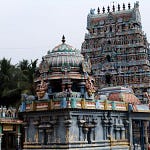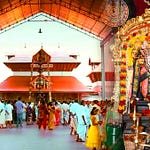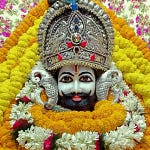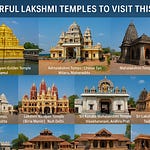Nestled in the tranquil surroundings of Bhojpur, a small town near Bhopal in Madhya Pradesh, lies a majestic yet incomplete masterpiece of medieval Indian architecture — the Bhojeshwar Temple. Built during the 11th century under the patronage of the great King Raja Bhoj, this temple is dedicated to Lord Shiva and is often referred to as the “Somnath of the East.”
🕉 Historical Background and Origin
The Bhojeshwar Temple was constructed during the reign of Raja Bhoj (1010–1055 CE), one of the most illustrious kings of the Paramara dynasty. Known for his patronage of arts, architecture, literature, and science, Raja Bhoj envisioned Bhojpur as a planned town, with the Shiva temple as its spiritual and cultural heart.
Interestingly, the temple is incomplete. Historical and architectural evidence suggests construction may have been halted suddenly — possibly due to war, a natural disaster, or the death of the king. Despite its incomplete form, the temple exudes grandeur and spiritual intensity.
🛕 Architectural Grandeur
The temple stands on a raised platform with massive stone slabs fitted together without any mortar — a feat of ancient engineering.
It features a 65-feet high sanctum and houses a monolithic Shiva Linga that is 7.5 feet high and 17.8 feet in circumference, one of the largest in India, carved out of a single stone.
The pillars, carved doorways, and the massive arched ceiling reveal incredible precision and design, hinting at a highly skilled workforce and visionary craftsmanship.
🔱 Religious Significance
The Bhojeshwar Temple holds deep spiritual significance for devotees of Lord Shiva:
The Shiva Linga here is believed to represent limitless cosmic energy, a symbol of creation and destruction.
Pilgrims and spiritual seekers visit to offer jalabhishek (offering of water), milk, and bilva leaves to the Linga, especially during Shivratri and the month of Shravan (July–August).
It is said that prayers offered here with pure devotion lead to liberation from karmic cycles.
🕯 Puja, Rituals, Aarti & Temple Timings
Daily Rituals:
Abhishekam (ritual bathing of the Linga) is performed daily with water, milk, curd, ghee, and honey.
Offerings of belpatra, bhasma (sacred ash), and flowers are made by devotees.
Pradakshina (circumambulation) around the Shiva Linga is considered highly auspicious.
Aarti Timings:
Morning Aarti: 6:00 AM – 7:00 AM
Evening Aarti: 6:00 PM – 7:00 PM
Temple Timings:
Open daily from 5:30 AM to 8:00 PM.
Special darshans and rituals are held on Mondays, Shivratri, Shravan Somvar, and during Maha Shivratri.
🕉️ Sacred Shlokas & Chants
Pilgrims often chant the following powerful shlokas in the temple:
**ॐ त्र्यम्बकं यजामहे सुगन्धिं पुष्टिवर्धनम्।
उर्वारुकमिव बन्धनान् मृत्योर्मुक्षीय माऽमृतात्॥**
Meaning: We worship the three-eyed One (Lord Shiva), who nourishes all beings; may He liberate us from the cycle of death, for the sake of immortality.
🧩 The Mystery of the Unfinished Temple
The temple’s construction was suddenly halted. What caused it?
Theories include:
A sudden invasion or war interrupted the building process.
A natural calamity, such as an earthquake or flood.
The untimely demise of Raja Bhoj, resulting in political instability.
Inscriptions and quarry remains suggest plans for an entire temple complex, including multiple temples, which were never completed.
In the nearby quarry, half-carved stones, temple molds, and architectural blueprints etched into rock remain, offering a rare glimpse into the ancient temple-building process.
🧭 Travel Guide: How to Reach Bhojpur
By Air:
Nearest Airport: Raja Bhoj Airport, Bhopal (35 km)
By Train:
Nearest Railway Station: Bhopal Junction
Taxis and autos are available from Bhopal to Bhojpur.
By Road:
Well-connected by road to Bhopal and other major cities.
Regular buses and private taxis are available.
🏞 Nearby Attractions
Bhojpur Lake (Upper Lake): Said to have been built by Raja Bhoj himself.
Jain Shrine: Located nearby with colossal statues of Jain Tirthankaras.
Bhimbetka Caves: UNESCO World Heritage Site with prehistoric rock paintings (around 20 km away).
🌿 Best Time to Visit
October to March: Pleasant weather for exploration.
Shivratri and the month of Shravan are spiritually vibrant with special pujas and large gatherings.
🧘♂️ Spiritual Vibes & Cultural Impact
The Bhojeshwar Temple is not just an architectural wonder but also a sacred energy center. Its serene surroundings, the roaring of temple bells, and the echo of “Har Har Mahadev” make it an unforgettable spiritual experience.
The Bhojeshwar Temple stands as a symbol of devotion, lost ambition, and mystical beauty. Despite being unfinished, it commands awe, respect, and reverence. Whether you are a pilgrim, a history enthusiast, or a traveler seeking tranquility, Bhojpur offers a magical blend of heritage and spirituality.
Har Har Mahadev 🙏
ॐ नमः शिवाय 🔱










